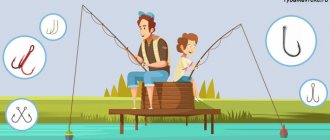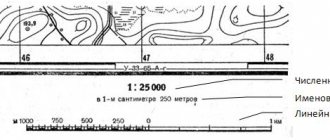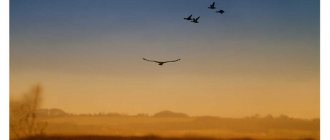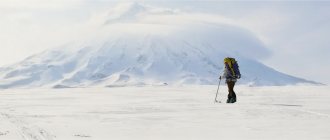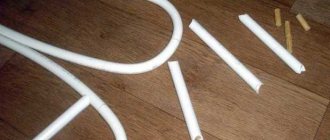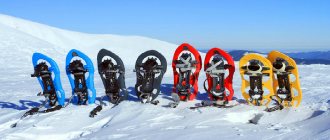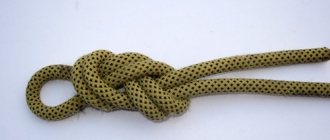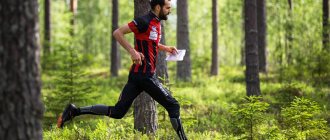For fast movement across the field and forest in winter, hunting skis are well suited because, unlike sports skis, they do not sink under the snow. With them, fishing at this time of year will be successful and safe. Such skis need to be selected according to the weight and height of the hunter. Also, when purchasing them, you need to pay attention to the material of manufacture and design features.
Skis called “golitsy”
Loaches are common in countries where people hunt in snowy areas. They are made from bare wood (hence the name) and are not covered with anything. You can walk on them and easily roll down. The shorter the length of the skis, the easier it is to use them to get through the rubble in the forest and maneuver on the descents and ascents. The hunter determines how to choose hunting skis based on territorial conditions and characteristics of the hunting areas.
The perfect material for making skis is birch. Its wood is light and tough. Less common are skis made of oak, spruce or aspen. In the Altai Mountains, craftsmen make skis from bird cherry. The results are strong and elastic butts. Such a pair has only one incorrigible drawback: in frosts above forty degrees they become fragile, like glass.
Types of skis
How to choose hunting skis? First of all, you need to find out what types of hunting products exist. In stores you can find products made of plastic and wood. When wondering which hunting skis to choose, you need to understand in what terrain they will be used. So, when moving in a snowy forest, where there are no steep ascents and descents, you can use both plastic and wooden skis. The first ones drive relatively fast. In addition, they do not require special care during the thaw.
Came skis
Experienced hunters choose these skis. This is a Russian invention. The uniqueness of kamus skis lies in the fact that a skin called kamus is attached to them on the running side. The skin of not every animal is suitable for making goods. You only need a certain piece from the lower leg (shin) of an elk, horse or reindeer. The choice depends on the area where the skis are made: in the Far North - reindeer skis, in the Altai Mountains - horse skis, in Western Siberia and the Far East - elk skis. The heaviest camus is horse camus, elk camus is lighter and stronger, deer camus is even lighter, but wears out quickly. The more time a person skis on such skis, the easier it becomes due to the leveling of the casing.
You can find skis lined with the skins of other animals. In the Far East from a young wild boar, in the Baikal region - from a seal. There are exotic skis with otter skin skins. Such options are allowed, but their disadvantage becomes obvious the first time you hike in the snow. The skins of any animal get clogged, which is an obstacle to skiing. The camus always remains clean, snow does not stick to it. And this is its unsurpassed advantage. Came skis are designed for moving over rough terrain. The fur prevents the skis from rolling back when climbing a hill.
Having opted for skinny skis, you need to be prepared for their careful storage. To do this, you need to know the existing means of combating moths, when to use them, and how to choose the right one. Hunting skis without proper storage will turn into unnecessary trash over the summer: insects will ruin all the fur on them within a month. Kerosene protects the selected product from moths, but its smell is difficult to get rid of. The latest invention is dichlorvos in plastic garbage bags. The bags are treated with the product and put on the skis. As a result, the insects die, and the smell disappears within a few hours after opening.
Ski care
Skis need to be looked after. Always remember that the main thing for wooden ones is timely impregnation. The impregnation itself (special resin) is inexpensive, about 150 rubles.
Do not coat the runners with paraffin. Then it is impossible to stand on level ground on these skis, let alone walk on any slight unevenness. Every climb then becomes an insurmountable obstacle. The runners slide very much and interfere with every movement.
It is especially necessary to impregnate skis made from aspen with resin. If they are made of birch, then you can do impregnation once every six months, but doing the same with aspen will not work. Aspen is a more porous tree and must be treated once a season. The first time is to clog the pores, and then once a season.
Also, aspen is very light and walking on runners made from this wood is a pleasure. But of course it also has a minus - it is soft. It gets bunched up at the edges, gets scratched on the trees and becomes like rubber. But if the kamus ones do not allow you to roll back, then these ones do not allow you to slide forward. And the biggest problem is their ability to crack lengthwise. They are not made from solid wood, so where they are glued they come apart and burst.
If you're lucky, you can wait 2-3 years for them, then they are guaranteed to burst lengthwise, and if you're unlucky, after a season.
Skis should be stored in a warm place, preferably in a vertical position, with the sliding side facing each other. You can tie them, preferably placing a small block at the center of gravity so that they look like they are on a stretch. And the main thing is to store it in a dry place, away from direct sunlight and heating devices.
Combined skis
When narrow strips of camus are attached to top skis, the result is a combination ski. So-called inserts made from the skin of deer, elk or other animal, 8-12 centimeters wide, are attached exactly in the middle of the sliding side. They are attached with small nails, a furniture stapler or strong glue. Artificial camus is also used. It is sold in the form of tapes with a special fastening. They can be removed and attached instantly. An artificial camus is made from a mixture of mohair and synthetics. Along with them, it is better to immediately buy a water-repellent spray.
Snowshoes
The main difference between snowshoes and skis is the ratio of their width and length. They are wide and short. You won't be able to ride in them, just walk. Their purpose: to move through deep, loose snow without falling through. For areas with uneven terrain and obstacles in the form of ravines and stumps, this is an ideal option. The wide base of the snowshoe allows you to stand steadily and confidently while plowing through the snow.
There are two types of snowshoes: solid and frame. The frame structure is a metal frame covered with a plastic membrane. Solid specimens are made of plastic, durable and frost-resistant. Both types have metal teeth (crampons) to overcome crust or frozen stones.
Plastic skis
Plastic skis are considered the most durable and lightest. They help especially well during the thaw. Melted snow does not stick to them, they allow you to maneuver on rough terrain. But in frosty weather they are more of a hindrance than a help. The plastic becomes too slippery, and you can fall if you roll down a hill quickly. It is difficult to climb uphill on them, as they roll back down.
Their undoubted advantages: skis do not need to be further processed before going into the forest, they do not get wet, and storage does not require special conditions.
Choosing skis for hunting
There are hunters who like only spring and autumn types of hunting, but are indifferent to winter ones and visit them extremely rarely. But still, the majority of amateur hunters and all fishermen go to the hunting grounds at all times of the year. It is in their arsenal of hunting equipment that skis occupy a very important place.
What characteristics should skis have?
Winter in our country is long and deep in snow in most areas; in the middle zone, skis have to be taken out of storage already in December. There is no way to do without them; it is simply impossible to move in deep snow. In mid and late winter, any winter hunting requires their presence. The hunter spends long hours on them and walks dozens of kilometers. This is why it is important to select and buy good equipment.
Only special factory or homemade skis are suitable for hunting; no other skis are suitable. Many people know how difficult and inconvenient it is to move on long and narrow sports skis in deep snow, and walking through the forest in them is even more difficult; with difficulty maneuvering between trees and climbing over rubble, you can easily break them.
1
Considering the specifics of their application, they must meet the following basic requirements:
- be wide enough, - light, - durable, - flexible - and glide well.
- Wide skis provide the necessary surface to keep a person on the snow.
- Lightness is very important during long treks.
- Strength – the weight of a hunter with a full set of equipment and a gun is large, so they must withstand high loads.
- Flexibility - facilitates movement and helps avoid breakage.
- Good glide – ensures fast movement.
Depending on the region of use, changes are often made to their design.
Types of skis
All hunting skis can be divided into two large groups: factory-made and home-made.
Factory
They are also called golitsy, and are currently produced from laminated wood - birch veneer, this gives them the necessary strength and flexibility. They are made in different lengths and widths so that every hunter can choose skis that suit his height and weight.
1) Wooden - the most popular because they are more universal, their temperature range of use is from -7 to -100 g. C. When choosing, their length is taken into account; it must correspond to the height of the person and the weight of the hunter; the larger it is, the wider the skis should be. In flat areas, long ones are more convenient, in mountainous areas - short ones. Reducing or increasing the length of the skis must be compensated by their width.
2
2) Plastic - have a number of advantages: they glide well, do not get wet and better resist the destructive effects of crust. The disadvantage is too much recoil and rapid sliding down hills and mountains in cold weather. You have to use a set of special ointments, but in the thaw they are not replaceable.
Nowadays they are also making combined ones - wood is covered with plastic.
3
Homemade
Most often used in the Urals, Western and Eastern Siberia, and the Far East. If they are made correctly, they will certainly surpass the factory ones in ease and ease of use. Such skis are made for a specific person and take into account his wishes. It is worth noting that in order to make them you need to have great skill, which is why they are especially good among the indigenous residents of the northern part of our country. Detailed technology for their manufacture can be seen in the film “Happy People”.
Homemade and factory-made products are often supplied with kamus. Kamus is the skin from the legs of an elk, deer or horse. Without it, it is almost impossible to move around mountainous areas. They cover the entire lower surface or only partially, in the form of a strip from their toes to their tips. They attach it to the skis in different ways - using nails, glue or sheathing.
Due to my inexperience, I had to experience the superiority of skinny skis over regular skis myself during a two-month stay on the island. Kunashir. After inspecting the reserve in the western part of the island, it was necessary to return to the base; the shortest route was through the pass. Less than half an hour had passed since I started climbing the hill when I had a strong desire to lie down on the snow and not get up again - the recoil of the skis simply exhausted me very quickly. The partners, on skis covered with camus, went far ahead. For them, the climb was not difficult at all. But, as practice later showed, ordinary skis also had their own advantages: they stuck less in deep snow, got wet less, and turned out to be stronger.
Care and storage
After purchasing or manufacturing this equipment, it is advisable to treat it with a special compound, for example, resin. This will protect them from moisture and extend their service life. I would like to advise novice hunters to always have a paraffin candle in their backpack. Winter weather is deceptive, cold weather can give way to warming and then the tree will gradually begin to get wet. This can be prevented by rubbing them with paraffin.
The installation of leg mounts on skis must be approached responsibly; their breakage or incorrect design can lead to the same consequences as damage to the ski itself - i.e. you will be left alone with the snow-covered virgin soil. It would be a good idea to have a repair kit in your backpack.
It doesn’t matter what kind of skis you use, the main thing is to treat them with care. Don't forget that being left without them in deep snow is quite dangerous. You shouldn’t check their strength when crossing fallen trees, don’t be too lazy to remove them, and when going down hills, you shouldn’t immediately jump over streams and ravines. After each use, it is necessary to remove snow from them and wipe them.
Hunting skis should be stored in a dry, ventilated area, away from the sun and heating devices or stove. In the summer, to prevent them from losing their bend, a spacer is inserted between the sliding surfaces.
4
Buying skis is not difficult in most cities, in any hunting, fishing, tourist or sports store. Where this is not possible, they can be ordered from ski factories or through online stores.
Buy or make?
Buying skis that meet the required parameters is not easy. Therefore, hunters try to make them themselves or order them from a ski-making specialist. This process is labor-intensive, requiring skill, tools and material. But everyone is free to decide for themselves. Through trial and error you can learn to make good hunting skis. The choice, production and features are individual depending on the purpose of use, the desires of the person, and his physical characteristics.
Today, even in remote places, there are few true craftsmen left. Therefore, skis created decades ago are treasured as the apple of their eye, realizing that few people succeed in building a product even closely similar to them.
Factory skis
Specialized stores have a wide range of similar products. How to choose the right factory-made skis? Those who have experienced them in practice will help you with this. The most popular skis are from the Vologda factory and the Novo-Vyatka plant. Both make skis from laminated wood.
Novo-Vyatka skis are known as “Hunting” skis. Their size is standard: width - fifteen centimeters, length - 165-175 cm. Skis are made in two types: skis made of plywood and plastic. The former retain functionality for many decades: if desired, they can be converted into combined ones. Plastic skis are comfortable in sticky snow; they glide without lubrication even when it thaws.
Vologda skis are sold under the name “Taiga”. Their size is different: width - sixteen centimeters, length - 155-165 cm. They are wider and shorter than the Vyatka product, but are almost the same in area. The choice is presented in three variations: skis, camo skis and plastic-coated skis. The first ones do not cause any complaints. They are shorter in length, which has a positive effect on maneuverability. The plastic coating is alarming, as it is stiffer than nylon (which is bad) and quickly peels off from the wooden base. Kamus skis are distinguished by the fact that in the locations of the grooves on the butts, strips two centimeters wide are glued along the entire length. Ski skins are made from deer or elk.
Hunters have a fairly limited choice. How to choose the right skis is up to each person to decide individually. It is advisable to listen to the advice of experts. But even here, no one is immune from making the wrong choice. What is good for one person may not be suitable for you personally.
How to choose hunting skis
Before you go shopping for hunting equipment An unspoken rule determines: the length of the product should not exceed the height of a person. This parameter alone is not enough, so you will need : a calculator, scales, and a tape measure. The initial parameters are the height of the hunter (in meters), as well as his weight with equipment (in kilograms).
To prevent a person from falling through when walking in loose snow, the area of the holding surface should approach 1/20 m² per 1 kg of the hunter’s weight.
The calculator will help you choose the right model:
- the hunter's weight in kilograms is multiplied by 0.05 m² to obtain the surface area required to hold the hunter;
- the resulting area is divided by twice the width of the runner, the required length is obtained.
For clarity, let's look at an example :
- let the hunter weigh 100 kg in all equipment;
- multiply 100 kg x 0.05 m² = 5 m²;
- divide 5 m² / 0.3 m (the width of the runner is 0.15 m, since there are two of them, we multiply by 2) = 1.66 m.
Therefore, to walk on loose snow or crust, in order to hold a 100-kilogram hunter on a snowy surface, the length of the runner should be 170 cm and the width 15 cm.
Classification
Skis for hunting are classified according to the material from which they are made.
- Wooden hunting skis . Use at temperatures from - 10 ºC to - 30 ºC. A mandatory condition for using the product is tarring . The procedure reduces the hygroscopicity of the wooden surface. It is necessary to carry out preventive measures as the treated surface wears off, every season.
- Plastic models. A special polymer applied to the sliding surface of the product extends its service life and prevents snow from sticking at above-zero temperatures. Use at temperatures from - 10 ºC to + 5 ºC. The glide of hunting skis is improved by scraping , then rubbed with paraffin .
- Kamus hunting skis. There are models with full camus or with partial camus. Came skis are indispensable on rocky terrain with complex terrain.
- Combined hunting skis. Usually the main material is wood, and the sliding surface coating is made of polymer.
Manufacturers pay great attention to the characteristics of the material used in the manufacture of the product: while reducing weight, they maintain strength.
What to look for when choosing
To understand which skis to choose for winter hunting, you need to know the terrain of the planned hunting location.
- Plastic models, light and fast, are suitable for flat terrain
- For rocky terrain, it is better to choose hunting wooden ones made from durable wood. They don't slip much, but they also don't break when they hit random rocks.
- Came skis are suitable for hilly terrain - they are rough and protect against injury.
Pay attention to the linear parameters of hunting equipment. On flat terrain they use narrow but long skis, in mountainous areas - short but wide ones.
The temperature of the snow cover is also an important factor. At positive temperatures, wooden skis pick up moisture, and in severe frosts, plastic skis become super slippery. Experienced hunters have snowshoes for such cases.
Leading companies
The hunting goods market is replenished with new models. Below are the best representatives of brands:
- Polisend
- YOKO
- ArtWood
- PELTONN
- Karjala
- PC Mayak
